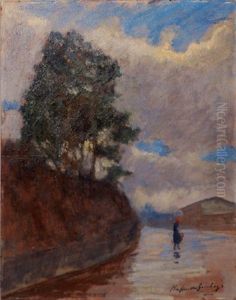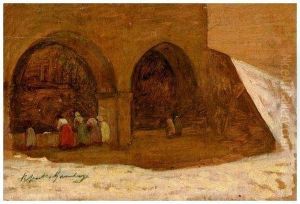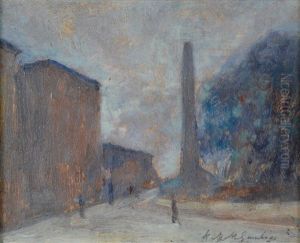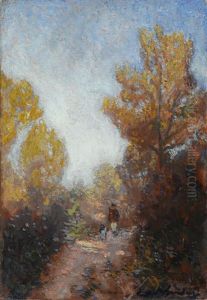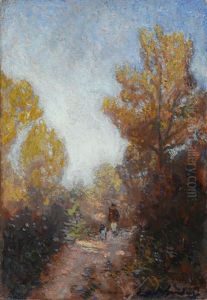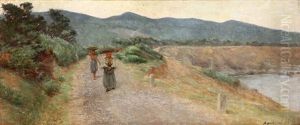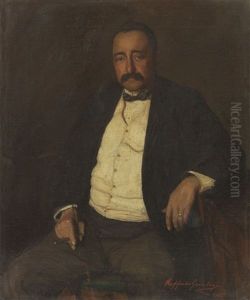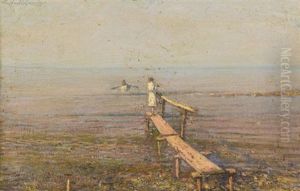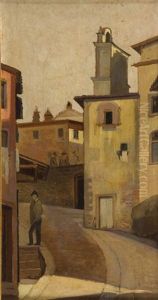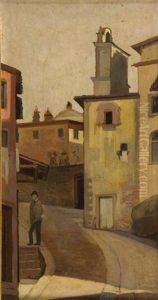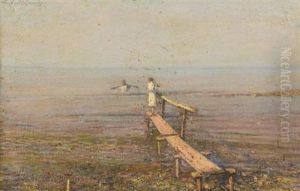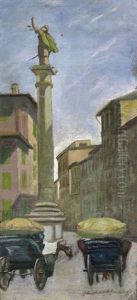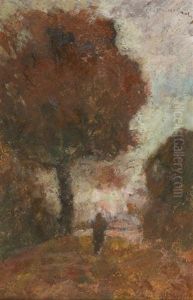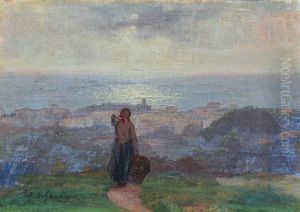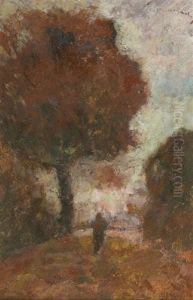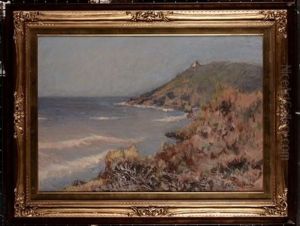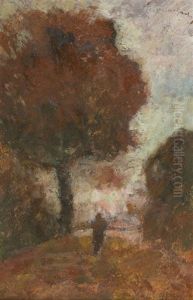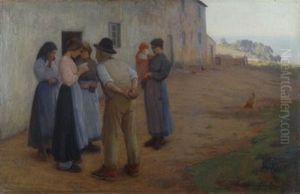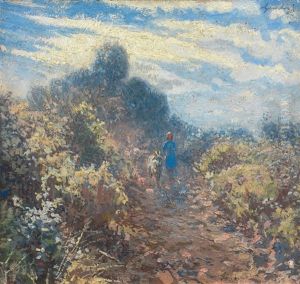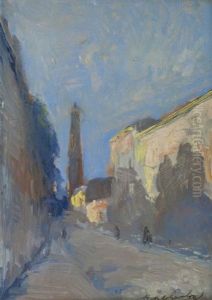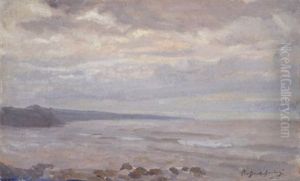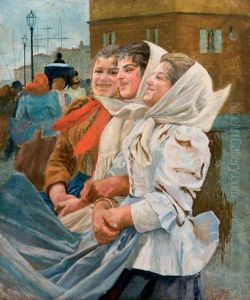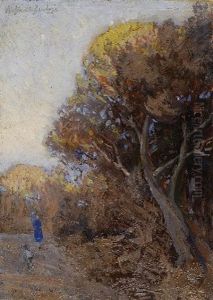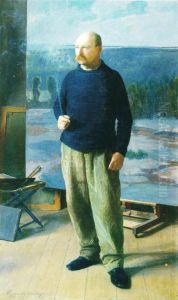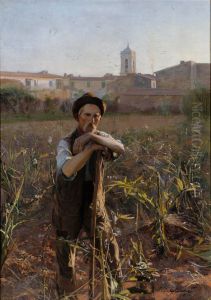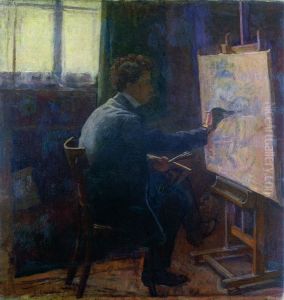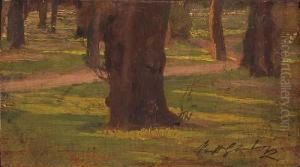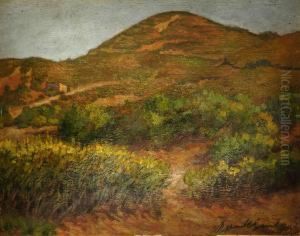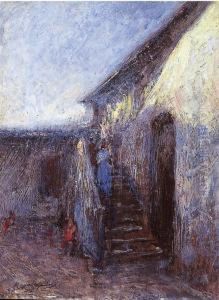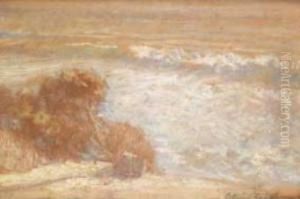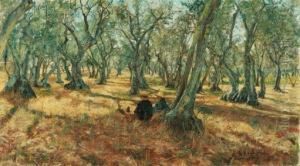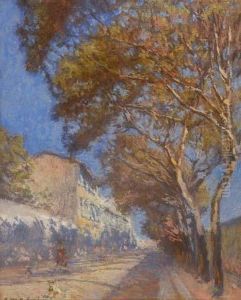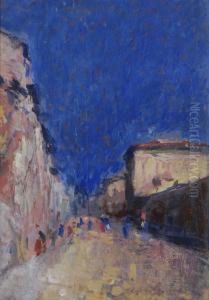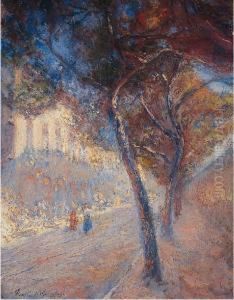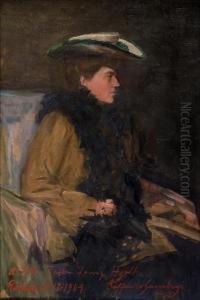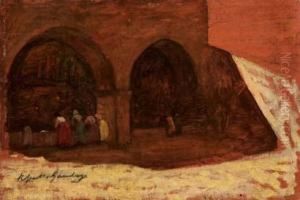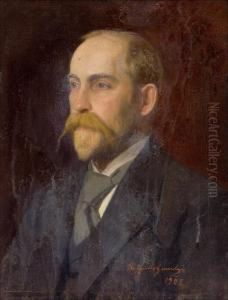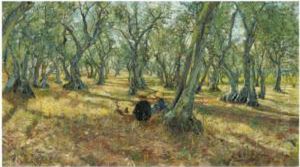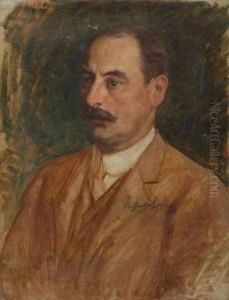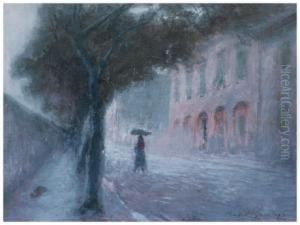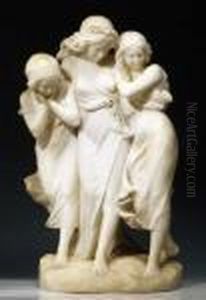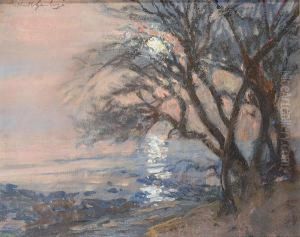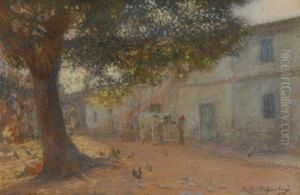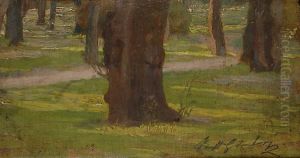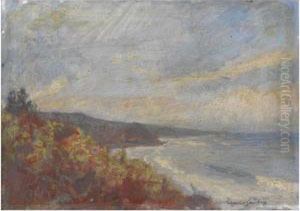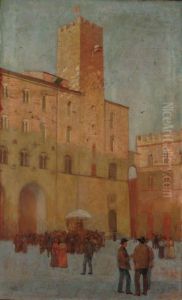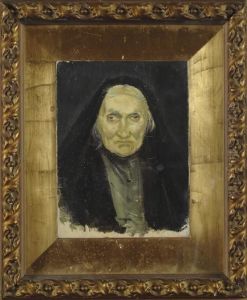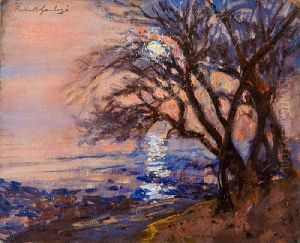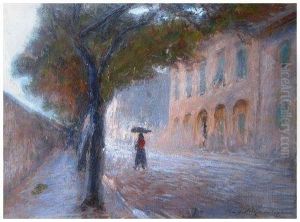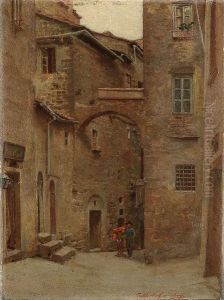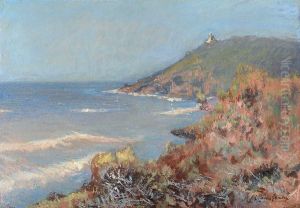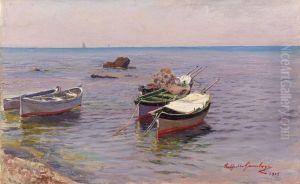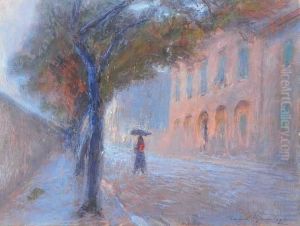Raffaello Gambogi Paintings
Raffaello Gambogi was an Italian painter born on August 27, 1874, in Livorno, Italy. He is associated with the Post-Macchiaioli movement, which followed the Macchiaioli group, known for their bold brushstrokes and emphasis on light and color. Gambogi's work reflects the transition from the 19th-century Italian painting traditions to the modernist approaches of the early 20th century.
Gambogi trained at the Academy of Fine Arts in Florence, where he was influenced by the Macchiaioli painters as well as the Realist movement. His early work often depicted scenes of everyday life, characterized by a sensitivity to social issues and the conditions of the working class. He was known for his portraits, landscapes, and genre scenes, infused with a naturalistic style and a focus on the effects of light.
In the early 20th century, Gambogi's style evolved to include elements of Symbolism and Art Nouveau. He began to explore more introspective themes, and his palette became lighter, adopting a more delicate approach to color. His work from this period shows a fascination with the female figure, often depicted in dreamlike or ethereal settings.
Throughout his career, Raffaello Gambogi participated in various exhibitions, including the Venice Biennale, and he received recognition for his contributions to Italian art. His paintings are held in several Italian museums and continue to be appreciated for their emotional depth and technical skill.
Gambogi's later years were marked by personal tragedy and declining health, which affected his output. He died on July 2, 1943, in Livorno, leaving behind a body of work that captures the transitions in Italian art from the late 19th century to the earlier part of the 20th century. His legacy is that of an artist who bridged the gap between traditional Italian painting and the emerging modernist sensibilities of his time.
